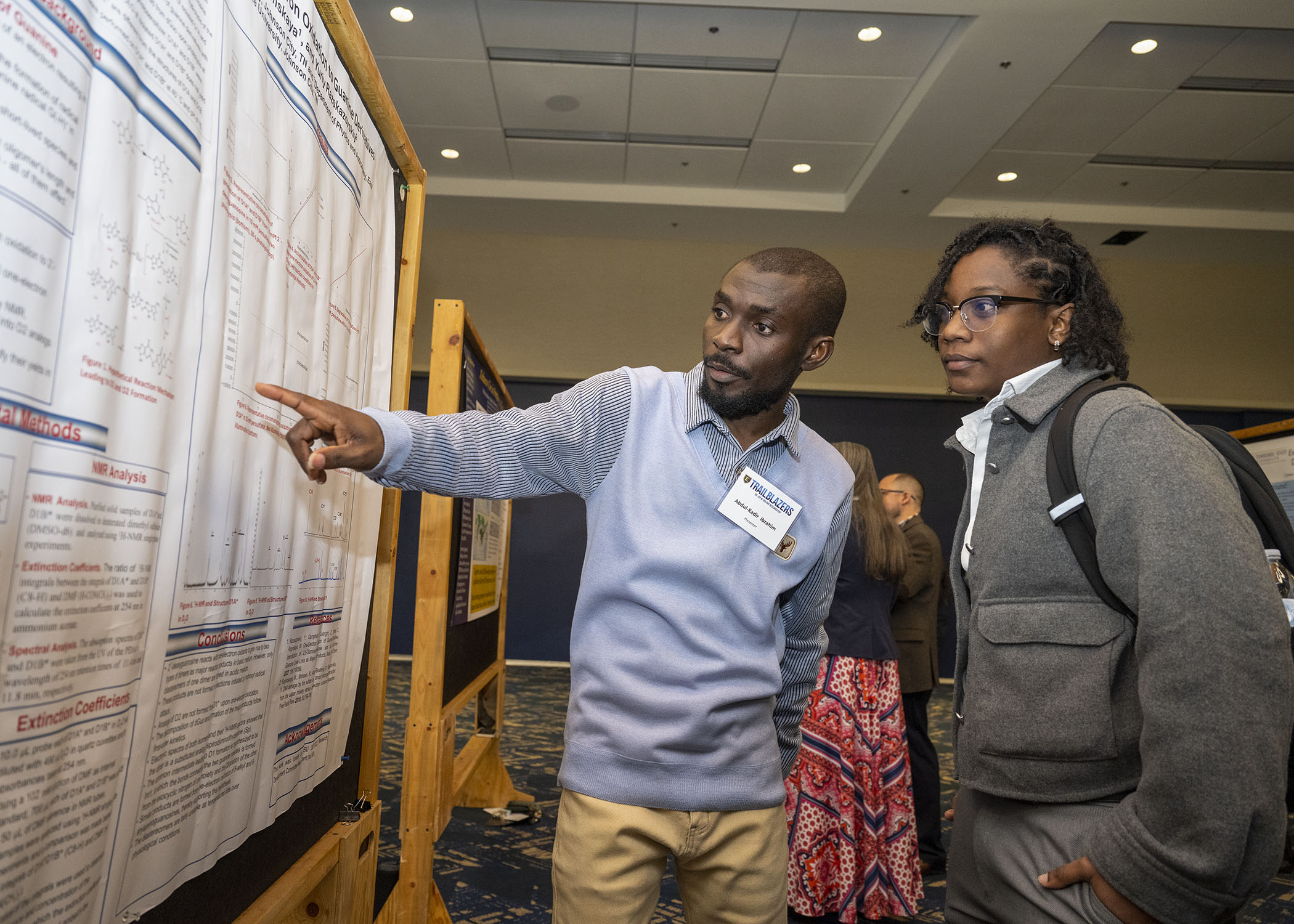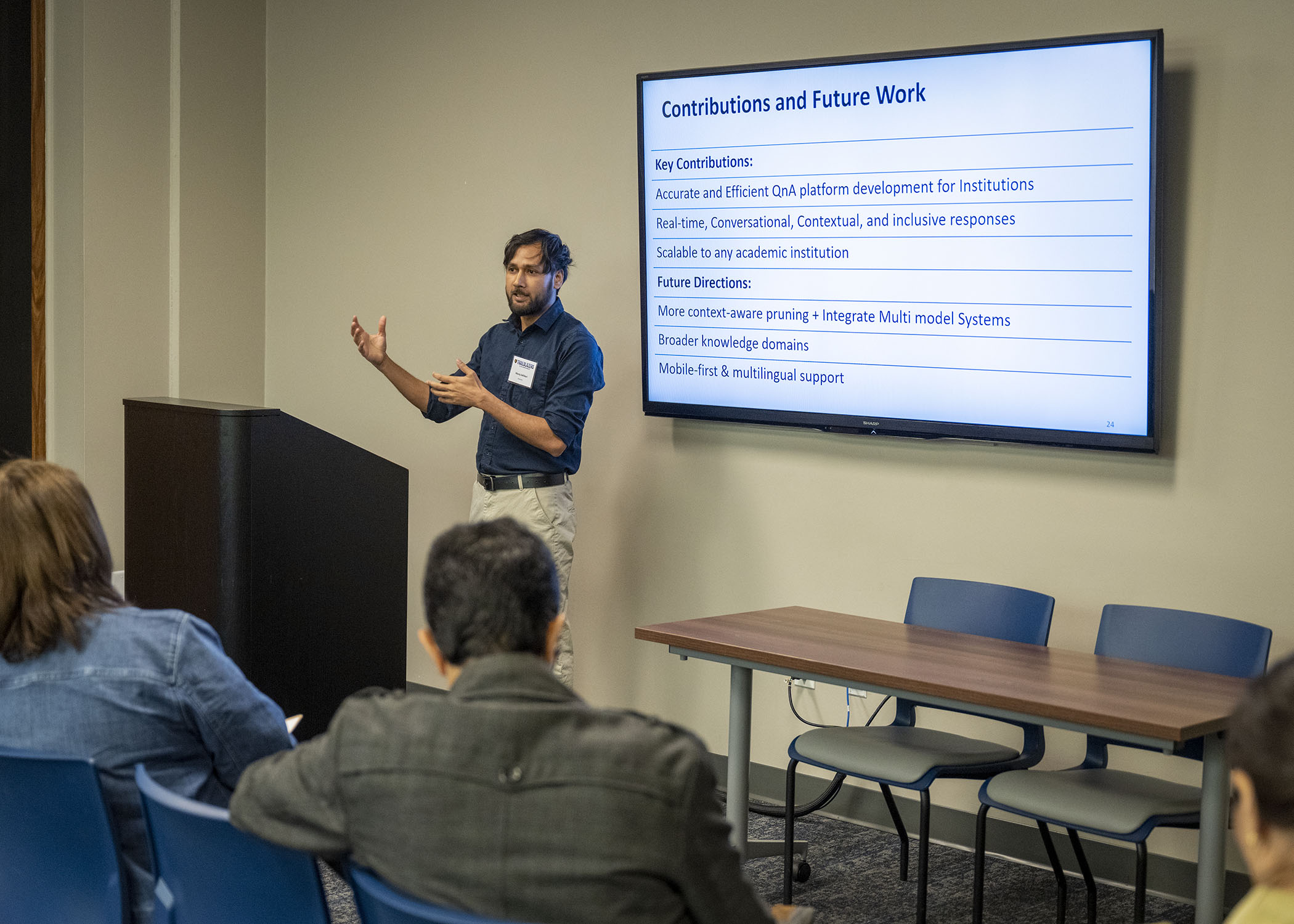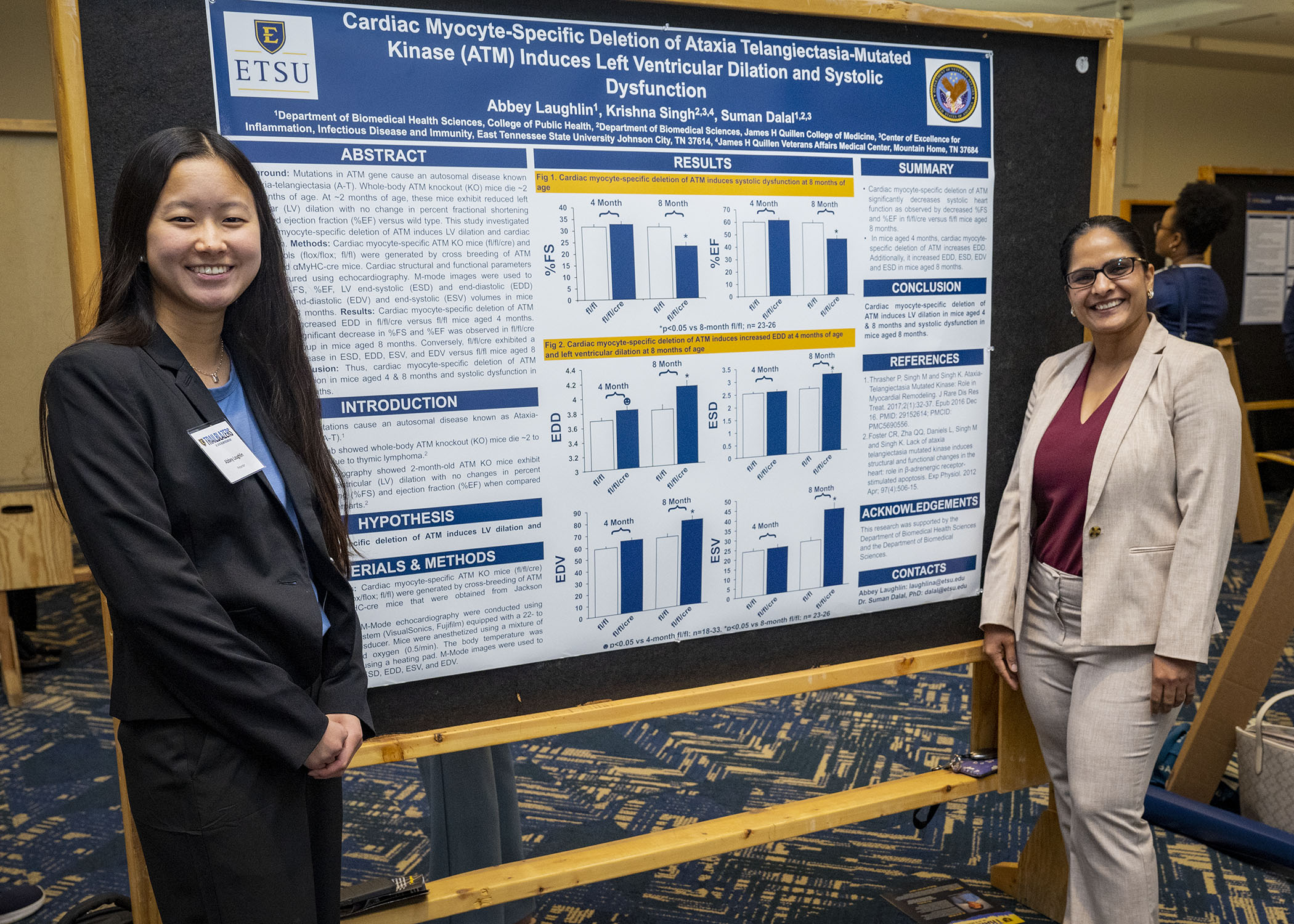Dr. Jay W. Boland Research Day
Undergraduate Research and Creative Activities, the Vice Provost for Research, and the Office of Community Engagement are pleased to present Dr. Jay W. Boland Research Day. Dedicated to the memory of former faculty member Dr. Jay Boland, the event combines what were once three separate events – the Boland Undergraduate Research Symposium, the Appalachian Student Research Forum, and the Community Engagement Showcase – under one umbrella. The event highlights the work of undergraduate students, graduate students, residents and fellows and includes a poster session, oral presentations, creative displays, and a community engagement showcase.



Thank You!
Thank you to all 2025 participants! The event was a major success and would not have been possible without the hard work of undergraduate and graduate students sharing their research. Additionally, we thank the faculty and staff judges who participated in the event by supporting and giving feedback to student presenters.
Our 2025 event involved 270 presenters and 93 faculty and staff members serving as judges. Read more here about awardees who participated in the competitive portion of Research Day.
Dr. Jay W. Boland Research Day 2026
Wednesday, April 15th
We're excited to begin preparations for Research Day 2026! While event details are still being finalized, we anticipate that the submission portal will open in December 2025. Please note that all information provided below reflects the submission requirements from last year and is subject to change.
Who can participate?
Undergraduates and Dual Enrollment Students
| Oral Presentation | Non-Competitive |
| Poster Presentation | Competitive or Non-Competitive |
| Creative Display (e.g. art, media production, performance) | Non-Competitive |
| Research-in-Progress Talk (this option is only available to students in the Undergraduate Research Honors Program) | Non-Competitive |
| Community Engagement Showcase | Non-Competitive |
Graduate Students, Postdoctoral and Medical Residents or Clinical Fellows, Pharmacy or Medical Students
| Oral Presentation | Competitive or Non-Competitive |
| Poster Presentation | Competitive or Non-Competitive |
| Creative Display (e.g. art, media production, performance) | Non-Competitive |
| Community Engagement Showcase | Non-Competitive |
Special thanks to the Boland family for being supportive of this endeavor.
SUBMISSION GUIDELINES
Research-based Poster/Oral Presentations and Creative Displays
Submission Guidelines for Poster Presentations, Oral Presentations, and Creative Displays
All registrants must submit an abstract or artist's statement along with their registration information. Compose your abstract or artist's statement using the Guidelines outlined below. Once you have it completed, submit it to your faculty mentor/sponsor for his/her final approval.
-
Abstract Submission Guidelines
Abstract Guidelines
An abstract does not contain any references or illustrations. It is a paragraph written in your own words, describing your project. Please see the bulleted items below for an outline of the different parts of an abstract.- In general, your abstract should be informative about the entire project. Judges will look for relevance of the study to the discipline, and also for whether it is written such that persons outside the discipline can understand it.
- TITLE: The title of your abstract should indicate the overall subject matter of your project. It doesn't have to be "catchy", just informative.
- AUTHORS' SECTION: The authors section is where you will list all authors' name(s). The first author listed MUST be the student presenter followed by any additional authors - students and then faculty, in that order. Authors' department, college, and institution must be provided, as well.
- BODY TEXT: The abstract text is a paragraph written in your own words, describing
your project. It should be written in one single paragraph and the length of that
paragraph should be no more than 300 words. Your abstract paragraph should have three
(3) distinct parts:
- an introduction which specifically identifies the projects objective(s) and briefly states the question and hypothesis. Your question and hypothesis statement should answer the questions: "Why do we care about the problem? What practical, scientific, theoretical or artistic gap is your research filling?"
- a thorough description of the methods and processes used. This is a very important section, as it should include details of what you actually did to get your results;
- a summary of the results and any conclusions. You should NOT say "The results will be discussed". Instead, you should answer the question "As a result of completing the above procedure, what did you learn/invent/create?" Any conclusions drawn should explain the larger implications of your findings, especially for the problem/gap identified in the introduction. Judges will look to see if your conclusions tie back to the question. Note: if your project is not yet completed, you may describe the expected outcomes.
- Limit your abstract text to 300 words or less. Microsoft Word has a Word Count feature; please use it.
-
Artist's Statement Guidelines
An artist statement is piece of writing (in the first person) that helps the audience access or understand your artistic work. If done well, it makes the reader want to learn more about your work.
- Title: Pick a title that is descriptive and interesting. For example, the use of humor in your title or an interesting association or combination of words may serve to attract attention to your presentation (e.g, "There’s Something Fishy Here: Oceanography Inspires Design"). Shorter titles generally are better than longer ones. Keep in mind that the title is your first and best chance to interest and inform your audience about your presentation.
- Limit the length of your artist statement to 300 words or less. Microsoft Word has a Word Count feature; please use it.
- Your artist statement should clearly describe what creative work(s) will be shared
with the audience. In most cases, artist statements also include:
an explanation of what motivated or inspired you what you want the audience to see, experience and/or feel when they view your work any interesting aspects of the materials or techniques used any other information that will help the audience interpret and appreciate the work you are exhibiting or performing. - For performances involve using material from established works, please provide the title/composer and/or the name of the play/musical in their artist statement. Include a few details about your selection (why you chose to perform this particular piece, information on the choreographic process - themes, tone, choreographic devices used), who you worked with to develop the performance (listing fellow performers, any coaches in acting/directing/choreography/voice), etc.
Remember These Points
- Do not wait until you register to compose your abstract or artist's statement.
- The student registering must be the presenter (no substitution allowed except for emergencies).
- Only one registration per project (multiple students cannot give separate presentations on the same project).
- If you have selected to present competitively, presenters must be present, by their posters, to engage with the judges on the day of the event to be eligible for an award. Before pasting your abstract or artist's statement into the registration form, ensure that it is accurate and error-free, including spell check. No changes will be allowed after the deadline date has passed.
- Do not include any protected/confidential information of any kind in your presentation as this is a violation of federal and state law, and university policy.
- No late submissions will be accepted.
Community Engagement Learning Showcase
We are looking for dynamic stories, unique service projects, and inspiring community engagement projects. We are seeking submissions from undergraduate students who have engaged in community service activities, Community-Engaged Learning classes, community-based research, and/or alternative break experiences that have made an impact on them as students and benefited the community partner. Community-Engaged Learning experiences can be curricular or co-curricular. Students are welcome to submit a proposal as an individual or as part of a group. Selected applicants will make a 10-minute oral presentation at the Community Engagement Showcase followed by 5 minutes of Q&A and feedback.
Criteria for Submissions
-
Mutually Beneficial Partnership
- Did the student collaborate closely with a community partner on a community identified need?
- What was the value and/or impact of the project to the community partner or larger community?
-
Critically Reflective
- To what extent did the student engage in intentional reflection about their service experience?
-
Social Responsibility & Civic Identity
- To what extent did the project or experience help the student make meaningful connections between their Community-Engaged Learning experiences and academic course content?
- Describe or demonstrate how the project or experience influenced your future aspirations?
- To what extent did the project or experience encourage the student to consider and articulate how it prepared them to make productive contributions in a diverse society.
Questions? E-mail bolandresearch@etsu.edu
 Utility Shut Downs - Winter B...
Utility Shut Downs - Winter B...